70 Years of Horsing Around: The Enduring Appeal of Breyer’s Model Horses
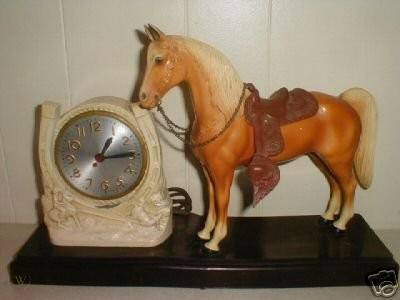
Some little girls play with dolls. Others are more interested in playing with horses. And they don’t always outgrow their passion for equestrian playthings: There’s one brand of model horse that continues to be wildly collectible and highly sought-after by equine enthusiasts of all ages and budgets.
In fact, millions are sold each year, along with miniature stables, trucks and trailers, bridles and saddles, blankets, fly sheets, and other horsey necessities, including fully articulated riders. While retail prices remain relatively modest, limited editions, colorway variations, test models, and customized versions can sell for up to 5 figures. These amazingly lifelike replicas even compete in both live and photo shows!
We’re not talking My Little Pony, either. The gold standard of model horses was established decades earlier, in 1950, when F.W. Woolworth commissioned the Chicago-based Breyer Molding Company to create a plastic horse statue intended to adorn a Western-themed mantel clock. An original vintage 1950s Breyer Palomino MasterCrafters Clock sold on eBay for $113.49 on February 2, 2008.
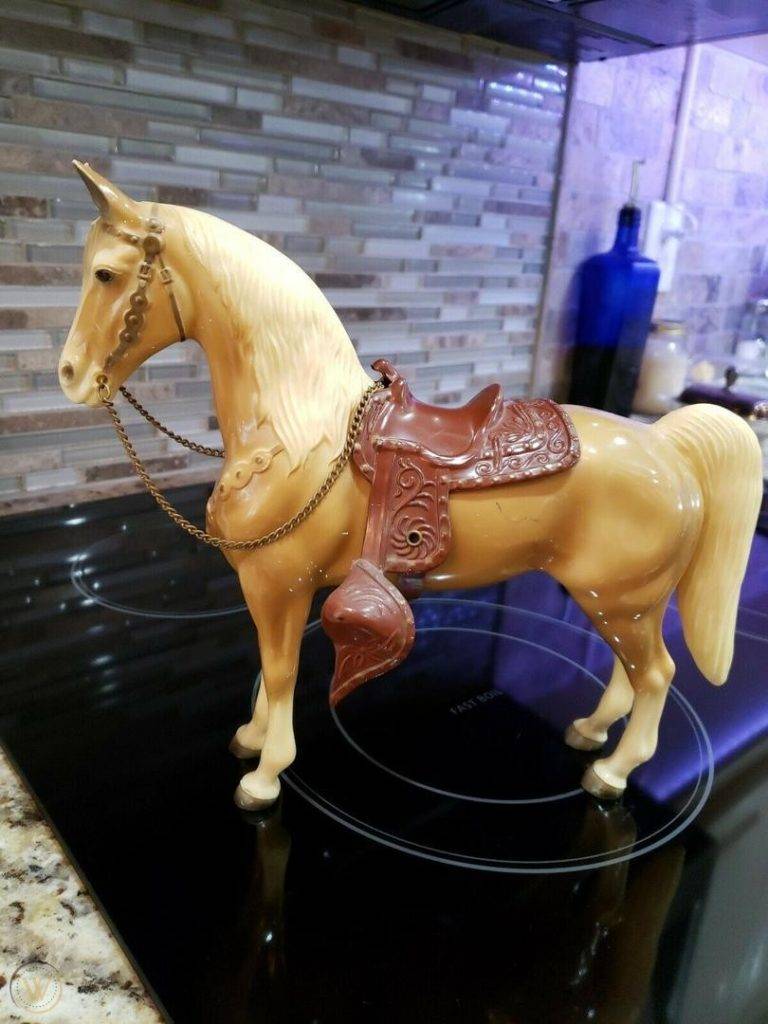
Unfortunately, Woolworth didn’t pay the bill for producing what is now known as #57 Western Horse, so Breyer kept the mold and retained the rights to it as well. Then orders began to pour in for the model horse alone, without the clock.
Company founders Sam Stone and Charles Schiff were quick to capitalize on this new opportunity, and Breyer Animal Creations was born. It proved to be wildly successful. In addition to model horses, the new firm also produced models of elk, cattle, deer, pigs, and dogs, but it is best known for its scale-model equine replicas.
As for Breyer’s inaugural equine design, from 1954-1962, the iconic #57 Western Horse was also available as a lamp. A working Breyer #57 Pinto lamp complete with its original burlap shade sold for $152.50 on April 19, 2008, while a #57 Palomino lamp with an original parchment shade sold on eBay for $282.77 on June 12, 2017.
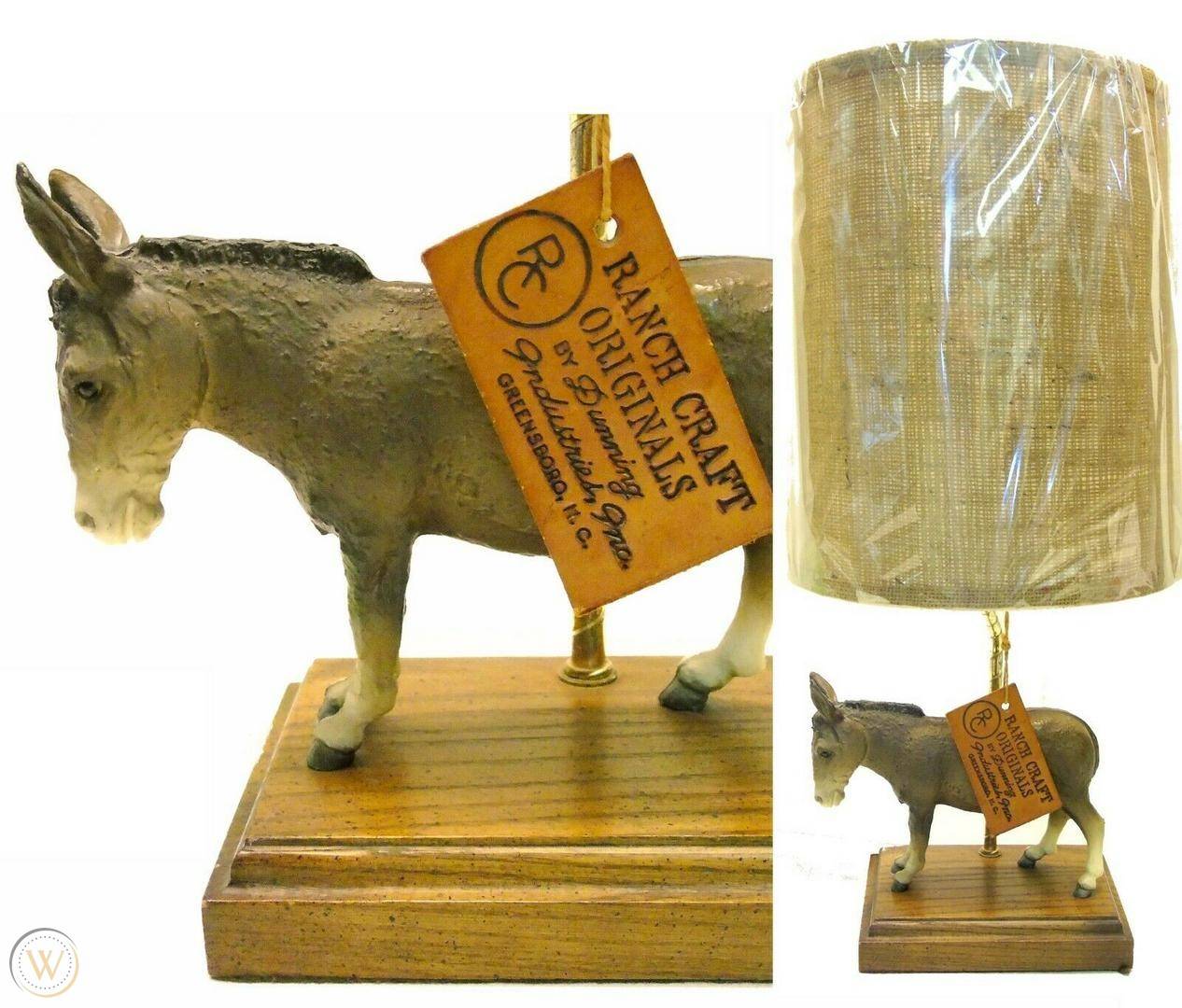
Throughout the 1950s and ‘60s, various Breyer horses, cattle, and other animals were featured on lamps as well. A Breyer Donkey lamp from Ranch Craft Originals by Dunning Equestrian Western Décor sold on eBay for an impressive $362.99 on September 9, 2019. A WorthPoint search for “breyer lamp” turns up 486 results.
In 1984, Breyer was purchased by Reeves International Inc. This year, the company is celebrating its 70th anniversary. To celebrate this milestone, they’re offering a new Deluxe Collectors Club membership, complete with an exclusive 70th anniversary Breyer horse.
After 7 decades, collectors’ passion for Breyer’s plastic model horses has grown along with the company’s product line. A WorthPoint search for “breyer horse” (without quotation marks) yields 88,346 results. Realized prices range from $1.13 for a lot of 3 sold on eBay on September 17, 2013, to $9,500 for a rare 1960s Wedgwood Blue Texas Longhorn Bull with a fascinating backstory, sold on eBay on May 24, 2008.
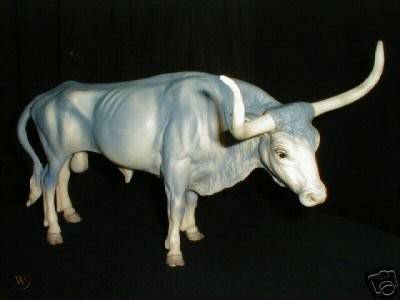
But even that price pales in comparison to that of a one-of-a-kind dappled sabino buckskin Alborozo model: Originally introduced at Breyerfest 2008 as a super limited edition, this gorgeous sculpted steed sold at the 2019 Breyerfest Live Auction for a record-breaking $22,000 — more than enough to buy a fairly nice real live horse! You can watch the frenzied bidding on YouTube.
So what makes Breyer’s scale-model plastic horses so special? Well, for starters, their unique material, meticulous production process, and unparalleled artistry. Breyer horses aren’t just made of any old plastic. They are crafted from cellulose acetate, a unique resin designed to capture even the most delicate details.
Today’s Breyers continue to be made by the same exacting process as the original #57. The model is first drawn on paper, then sculpted in clay, from which a two- or three-piece steel mold is cast. Next, cellulose acetate pellets are melted and injected into the molds under high pressure. The resulting models are allowed to cool before being assembled.
Finally, each finished horse is hand-painted. Most start from a white base, with multiple layers of paint required to achieve the richness of depth and color that distinguishes Breyer Animal Creations. No detail is overlooked, right down to the whites of the eyes and pink of the inner nostrils. And because they are hand-painted, just as with real horses, no two Breyer horses are alike, even those that come out of the same mold.
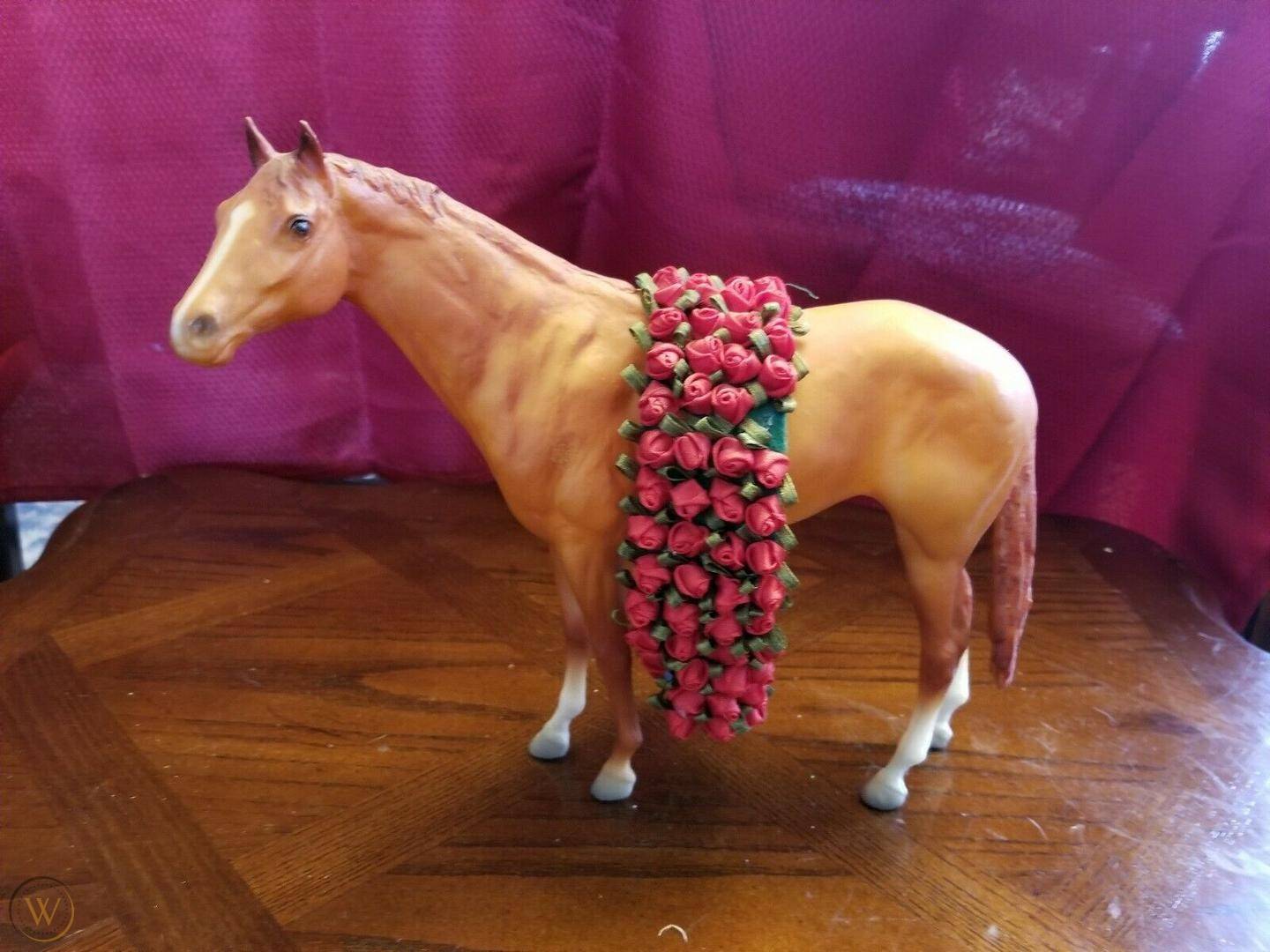
Furthermore, while the #57 Western Horse may be fairly generic, subsequent Breyer editions have been anything but. Equine standouts across various breeds and equestrian disciplines have been immortalized as Breyer Portrait Horses, including Triple Crown winner Secretariat; fictional pony Misty of Chincoteague; and legendary $80-plowhorse-turned-show-jumping-champion Snowman.
Breyer’s other designs are usually released in several colors and sometimes different finishes, such as matte or glossy. Each version of a particular mold is considered to be a separate model and given its own name and number. Prototypes that don’t receive a number are known as test runs. A one-of-a-kind Breyer Test Saddlebred sold on eBay for $2,025 on June 29, 2007.
The launch of Breyerfest in 1990 skyrocketed the popularity of collectible Breyers. Nowadays, new molds are frequently introduced, including a series of Halloween Breyers(some of which glow in the dark), while old ones may be retired or even accidentally broken or lost. Some vintage designs have even been re-released and have their own fervent cadre of collectors.
Color and markings variations are practically infinite. In addition to those found among actual horses, Breyer also releases fanciful editions known as Decorator Models. The first four were introduced during the 1960s: Wedgwood, Copenhagen, Florentine, and Gold Charm.
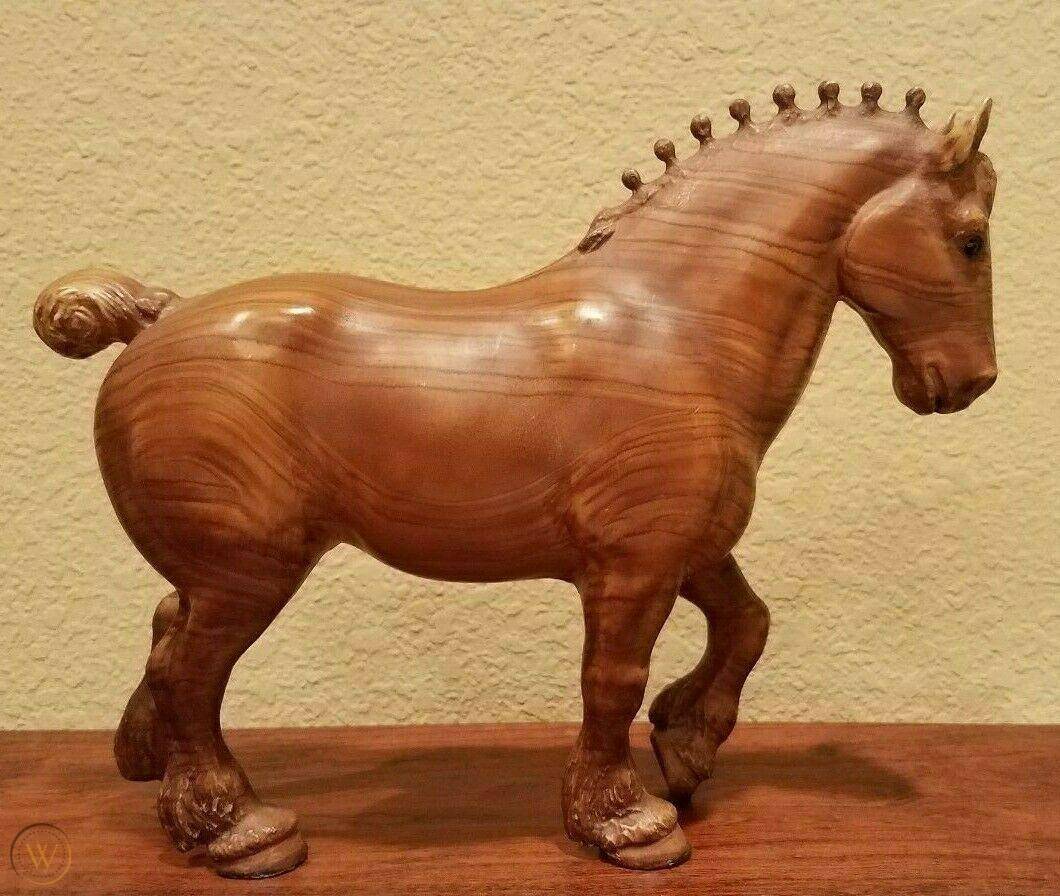
Another vintage finish is Woodgrain. Woodgrain Breyer models were particularly popular for lamps. Later, Breyer introduced a Bronze finish, and more recently, Silver Filigree. A few contemporary designs have been cast in a translucent form of cellulose acetate that looks like blown glass, known as Clearware. The company also experimented briefly with Flockies (flocked Breyer models).
In addition, collectors may add their own special finishes in the process of customizing their Breyer horses to make them unique. Sometimes they simply repaint or etch patterns in the existing paint; other Breyer fans go a step further, repositioning their horses by heating and reshaping them.
They may even completely resculpt their model, cutting away body parts, then reshaping and reattaching them before repainting and refinishing. A Breyer Brighty the Donkey reimagined as a dragon sold on eBay for $200 on June 25, 2007. Breyer also created their own Merlin the Dragon Horse, a winged model offered as a raffle prize at Breyerfest 2005.
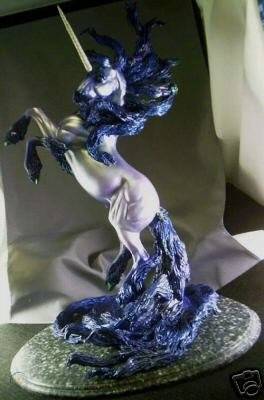
Meanwhile, Breyer’s Traditional Ruffian Thoroughbred Racehorse was transformed into “Dead Last,” the scary second entry in Luveorgie Studios’ Nightmare Series. The artist/seller’s listing contains a spooky caveat: “WARNING: “For the squeamish who don’t like the grotesque level of detail my Nightmare Series horse models contain…just close this auction and move on. I don’t need to hear about it. Just move on to another listing…Thank you.” This frightfully detailed carved and repainted model racehorse— complete with saddle blanket number 666 — sold on eBay for $589.99 on September 19, 2007.
Depending upon how well the customizing was done, the artist’s renown, and the aesthetic appeal of the results, customized Breyers may sell for hundreds or even thousands of dollars. A WorthPoint search for “cm breyer” (CM is the abbreviation for “Custom Made”) brings up 5,164 results. Prices range as high as $2,848.89 for a Peter Stone Gorgeous Grulla named Tequilla Skye (misspelled on purpose).
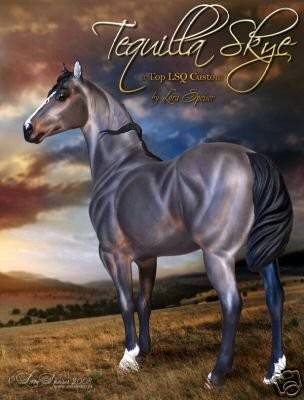
The value of a Breyer model horse depends upon several factors: age, rarity, variation, condition, and desirability. As a general rule, if a design was available for more than 3 years or more than 10,000 were made, it won’t be highly valued for age or rarity.
But pieces that were produced for a single year or, better yet, a single event — such as the Volunteer Models given to people who work at the annual Breyerfest — may be worth hundreds of dollars. A Breyerfest Volunteer Saddlebred (one of only 80 made) sold on eBay for $1,502.77 on May 9, 2008.
Variations from the standard release colorway can be as subtle as slightly different markings: e.g., an extra white snip on the horse’s muzzle, or a different number of socks (white on the lower leg). Two important variations are vintage chalky and pearly models. These were most often created during the 1970s (although earlier and later examples exist), when oil embargoes made white plastic expensive and hard to get.
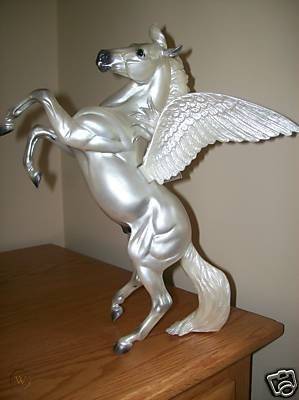
To keep costs down, Breyer began using recycled plastic, some of which was colored. Breyer painted these models with a white base coat before applying the regular colors. These are now known as “Chalkies” due to the chalky look of the white base coat. A 1970s black Stretch Morgan sculpted by Christian Hess sold on eBay for $119 on June 19, 2017.
“Pearlies” were made with a plastic that had a pearlescent finish reminiscent of carnival glass. Both Chalkies and pearlies are rare and worth more than standard versions of their design. Just don’t confuse a Chalky with a paint-over: a model that was salvaged from the cull bins and over-painted in a darker color to disguise flaws in the original paint job.
Vintage Breyers made in the USA (they’re now manufactured in China) are particularly desirable — especially if they’re in good condition. Condition is as important as rarity. Rubs (missing paint) reduce value, as do marks. Chips are considered a major flaw, while breaks relegate the model to the body bin. Don’t throw that damaged Breyer away, though, because there’s a whole community of collectors looking for body models to repaint and/or cut up and customize!
As model horse shows have grown in popularity — especially the fiercely competitive Collectibility division — realism and suitability for showing are also major determiners of desirability. Hence molds of horses with good conformation in poses suitable for the show ring are often more valuable than less show-worthy models.
In the course of its seven decades, the company has used a number of maker’s marks. Some early models — mostly woodgrains — sported a gold foil label with words Breyer Creation Made of Tenite Acetate. Tenite was the brand name of the cellulose acetate made by the Eastman Chemical Company.
Large and small blue ribbon labels adorned models from circa 1964-1970. From 1960 on, raised mold marks were adopted, usually placed on the inner hind leg or belly of models. Knowing the timeline of these marks can help pinpoint the age of your Breyer.
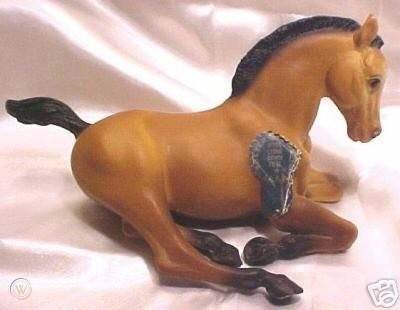
The website IdentifyYourBreyer.com is considered the definitive go-to for their extensive catalog of both current and retired Breyer models plus information on new releases, web specials, clubs, model horse shows (yes, they’re a real thing), Breyerfest and other events — even a glossary. There’s also a site index page featuring an extensive list of resource links.
In addition, there are websites and collectors’ blogs by the likes of the Breyer History Diva devoted to Breyer model horses, including information on cleaning as well as evaluating, restoring, and repairing them. If you prefer your reference works in print, look for Breyer Molds and Models (fifth edition) by Nancy Young Atkinson, Schiffer Publishing, 1997.
Happy trails!
Betsie “eBetsy” Bolger is a freelance writer/editor, former eBay Education Specialist, and Top Rated Seller on eBay. She sells new, estate, vintage, and artisan jewelry for a client’s account as well as Converse sneakers, vintage jigsaw puzzles, limited-edition Teddy the Dog merchandise, and select consignment items in partnership with her husband. Betsie is also a longtime WorthPoint fan who previously wrote WorthPoint’s commercial spots for eBay Radio. Find her via ebetsy.com, acquisatory.com, and TexAnnasAllStore.com.
WorthPoint—Discover Your Hidden Wealth®
The post 70 Years of Horsing Around: The Enduring Appeal of Breyer’s Model Horses first appeared on WorthPoint.
